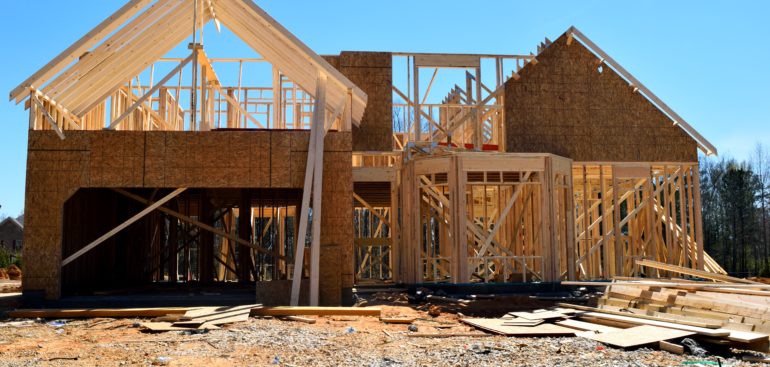 Which home loan is right for you?
Which home loan is right for you?
How can you tell when there’s so many different lenders, loan types and features to choose from? How can you compare loans properly when you’re not sure what you should be comparing?
Finding the right home loan for your situation is a process that can be confusing, particularly for first-timers. In this article, we give you a basic guide for making home loan comparisons and tell you more about the features you may need with your home loan.
Interest rates and comparison rates
Interest rates are one of the factors which determine the cost of your mortgage and how much your repayments will be. Even a small difference in interest rates can make a significant impact on the amount of interest you’ll have to pay over the term of the loan. However, the loan with the lowest interest rate may not necessarily be the cheapest, as there could be additional fees to factor in. This is where the comparison rate comes in.
The comparison rate is an indication of the true cost of a loan, once the interest rate and fees are included. It’s usually expressed as a percentage, which makes it easier for you to compare the real cost of different loan products. When choosing a home loan, it’s important to look at both the comparison rate and the features that come with the loan.
Loan Types
Principal and Interest
This type of home loan requires you to make repayments that cover both the principal (or the amount you borrowed) and the interest at the same time. People buying their own home usually use a principal and interest loan, as you pay down your loan with every repayment until you eventually own the property.
Interest-only
An interest-only loan allows you to only pay the interest you owe on the loan for a fixed period – usually from one-to five years – so the monthly repayment is lower than it would be under a principal and interest loan. At the end of the fixed period, the loan usually reverts to a principal and interest loan, but it is possible to refinance to another interest-only period. People buying an investment property often start off with an interest-only loan because the interest (and therefore the entire repayment) is tax deductible for them. However, they are not considered ideal if you are buying your own home to live in as you will likely end up paying more in interest over the term of the loan and your repayments don’t pay off the original loan amount.
Variable Home Loan
With a variable rate home loan, the amount of interest you pay may go up or down in response to changes in interest rates. This can be a good thing if interest rates go down, as the interest you pay will be less and your repayments will decrease. Another positive is that you can often make extra repayments on a variable home loan, which may help you to pay off your home loan sooner and save some interest over the term of the loan.
Fixed Home Loan
A fixed rate home loan lets you lock in your interest rate for a period (usually 1 to 5 years). The benefit is that you know exactly how much your repayments will be during that time, which can be beneficial if you’re on a tight budget or a fixed income. You’ll also escape any interest rate rises that may happen during the fixed period.
However, if interest rates fall, you won’t be cracking open the bubbly because your home loan interest rate will stay the same and so will your repayments. There may also be restrictions on making additional repayments with a fixed rate home loan.
Split Home Loan
One option that appeals to some homeowners is to fix the interest rate on a portion of their loan and keep the rest variable. This offers the certainty of knowing what your repayments will be on the fixed part of the loan, while you can make extra repayments and enjoy any interest rate drops on the variable part of the loan. It’s a way to get the best of both worlds!
Loan Features
Offset Account
An offset account is a transaction account that’s attached to your home loan. It can save you money on the interest on your home loan and help you pay off your loan sooner because the money in your transaction account is offset daily against your loan balance, and you only pay interest on the difference. For example, if you owe $300,000 on your home loan and there’s $50,000 in your offset account, you’ll only pay interest on $250,000.
Redraw Facility
A redraw facility allows you to make extra repayments on your home loan and then take out the extra repayments you’ve made later if you need to use the money for a different purpose.
What’s right for you?
The right home loan choice is different for everyone. It all depends on your personal financial circumstances and goals. We’re here to help you decide what is right for you and will make recommendations based on what you tell us about your situation and what you want to achieve. Then we’ll compare the choices from the different lenders and offer you a selection of cost-effective options.
Don’t wait to find out what’s right for you. Call us today for a chat about your plans

Connolly Wealth Management
Level 1, 441 South Road
Bentleigh VIC 3204
(P) 03 9591 8000
(F) 03 9530 8375
(E) chris@connollywealth.com.au
(W) www.connollywealth.com.au
Disclosure: Christopher Connolly (280099) and Connolly Wealth Management Pty Ltd (333350) are Authorised Representatives of Wealthsure Financial Services Pty Ltd AFSL 326450
Disclaimer
The information contained in this email and its links/attachments are general in nature and does not take into account your personal circumstances, financial needs or objectives. Before acting on any information, you should consider the appropriateness of it and the relevant product having regard to your objectives, financial situation and needs. In particular, you should seek the appropriate financial advice and read the relevant Product Disclosure Statement or other offer document prior to acquiring any financial products.


 Which home loan is right for you?
Which home loan is right for you?
 What is the right loan for your renovation?
What is the right loan for your renovation?